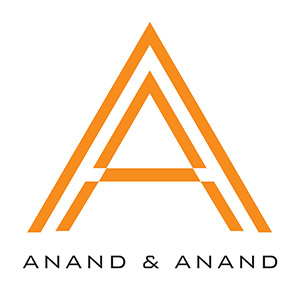The automobile industry is one of the fastest growing economic sectors, and from a legal standpoint several increasingly popular trends can be seen, write Pravin Anand and Safir Anand.
One of the primary strategies the authors have come across in recent times is that of industry leaders entering into collaborative agreements to buck the trend and succeed jointly. Companies of the concerned sector are increasingly engaging in joint ventures with the aim of expanding their respective target consumer bases, and reach across different jurisdictional markets.
In such scenarios, companies need to be careful of how agreements are structured. For example, issues of severability of an agreement must be carefully inserted, the ability to enforce rights in case of a third-party conflict or infringement must be artfully included in an agreement, issues of transfer pricing and the balancing art of royalties being paid by one company versus resources used of the other company must be addressed and ironed out.

Managing Partner
Anand and Anand
Email: pravin@anandandanand.com
The definition of a trademark includes use by exports and, hence, a joint venture must consider the scope of territories and expansion of rights. There may also be non-compete provisions relating to a joint venture, and the agreement must also consider compliance with the principles of competition law. There are successful models of joint ventures in India including Toyota Kirloskar, Maruti Suzuki and Hero Honda (in the past).
Flexibility provisions in the agreement must always be embedded to ensure freedoms for negotiations, and to avoid disputes. In the same vein, recent times have also paved the way for a winning business partnership between Toyota Motor and Suzuki Motor, documented in 2016. While this joint venture focused on market expansion, it was entered into with the aim of “cross-branding/co-branding”. Cross-branding essentially refers to a scenario where two companies collaborate to create a new product, which is launched under the brand names of both the companies.
This deal is an ideal recipe for success, given the areas of expertise of both companies. While Toyota is known for its robust technological strength in electrification, Suzuki is reputed for its compact vehicular mechanisation. Putting both to collaborative use and the agreed terms of cross-branding, Maruti Suzuki India and Toyota Kirloskar Motor have introduced a new sports utility vehicle as Suzuki and Toyota models.

Senior Partner and Head of Department (Trademarks, Contractual and
Commercial IP)
Anand and Anand
Email: safir@anandandanand.com
Additionally, as a part of this partnership, Suzuki’s well-known vehicles under the brand names Sedan Baleno, Ciaz and Vitara are also being rebranded and launched under the Toyota brand name. Similarly, Toyota’s Corolla vehicle is being redesigned and introduced in the market under the Suzuki corporate name.
This comes because of the shareholding implications of the business deal, whereby Toyota acquired a stake of 4.94% in Suzuki by investing USD908 million, and Suzuki acquired a minority stake of 0.22% in Toyota with an investment of USD454 million.
Trademark infringement. While the collaborative models have been helping brands catapult their respective financial growth, intellectual property disputes in the sector continue to be a staggering menace. As per the India Brand Equity Foundation: “the Indian auto component industry is set to become the third-largest globally by 2025”, and its “auto component exports are expected to grow and reach USD30 billion in FY26.”
However, with such fast-paced industrial growth, one challenge that is plaguing the automotive sector is counterfeit parts and components of vehicles, primarily because of the lack of safety checks and mandates in trading of the same. This not only poses a threat to the safety of consumers, but is also certainly an intellectual property infringement of automobile brands. Most of the counterfeiting of vehicle spare parts is seen in the aftermarket, the market “after the sale” of vehicles.
To combat this legal problem, it is crucial that companies in the automotive sector, as in any other industry, be proactive in taking due restrictive measures against counterfeiters, and also make their own authorised spare parts and components more easily available to consumers.
It is also important that automobile companies place standardised regulations/mandates at custom houses (i.e. a custom registration, as a starter), while also monitoring the import and export flows of components.
In this regard, the case of Monte Carlo Fashions amicably resolving its infringement dispute with Skoda Auto India is unique. Even though Monte Carlo is a non-automobile company, it initiated a suit of infringement against Skoda India regarding the latter’s use of the trademark “MONTE CARLO” for its vehicles and related spare parts/components. Interestingly, the dispute was settled with Monte Carlo licensing rights to use the trademark MONTE CARLO to Skoda India for limited goods only.
Design issues. While on the topic of intellectual property disputes vis-à-vis trademarks, concerns over designs of vehicles being copied cannot be too far away. Moving to an international case in this regard, earlier in 2023, the US District Court for the Eastern District of Michigan ruled in favour of the multinational automotive company Mahindra & Mahindra in a case of design infringement initiated by Fiat Chrysler Automobiles.
The case pertained to the “grille design” of the petitioner’s Jeep and the alleged infringement of the same by Mahindra’s Roxor off-roader, with an apparent “nearly identical copy” design. However, considering distinguishing features of Mahindra’s Roxor (redesigned in 2020), the court held that there was no design infringement, as the Roxor off-roader could be distinguished from Fiat’s Jeep grille design. In fact, the court, while ruling in favour of Mahindra, also took into account the fact that the Roxor was an off-roader without legal permission to operate on American roads.
Additionally, for design issues, if a prototype has been amended to make it conducive for the Indian market, then contributory intellectual property is created. The agreement must make provisions for acknowledging and recognising that.
AI and its legal implications
Finally, with the rise of the use of artificial intelligence (AI) in transforming the automotive industry, concerns regarding ownership as well as data privacy have also been rising. The conundrum over ownership of AI-generated works, especially inventions and legal recognition of the same, continues, without much uniformity on stance.
While the US Patent and Trademark Office, as well as the UK Intellectual Property Office, have refused to grant DABUS (Device for the Autonomous Bootstrapping of Unified Sentience) named patent applications for lack of human contribution, the South African Patent Office as well as the Federal Court of Australia have recently granted patent registrations in the name of the DABUS system, thereby recognising AI as a patent inventor.
Similarly, an ethical issue that is at hand with the exponential growth of AI use in vehicles is that of storage, analysis and management of data for autonomous vehicles and advanced driver assistance systems.
This is being seen especially in self-driving cars, which face the threat of hacking, cyberattacks and personal data attacks. While it is revolutionising the industry, the other side of the coin brings with it the dark side of unauthorised breaches and leakage of personal data, such as locations and driving patterns.
Sometimes businesses also have common technology that may not have factored IoT (internet of things) or AI, or previous consents may not have considered future areas into which the business may venture. Such understanding must be carefully structured in and factored into the agreements to avoid future disputes, as interpretation always depends on the practicality of the agreement.
Patents and trade secrets
The subject matter of patents in the automotive sector is moving away from the traditional field of mechanical engineering to the field of computer technology.
As automobiles become “smarter”, another hurdle that automobile manufacturers need to cross is that of standard essential patents (SEPs) in the communication sector. Communication technologies including the global positioning system, 3G, 4G, LTE, 5G, and near-field communication comprise several SEPs that are held by major communication companies such as Nokia and Ericsson, as examples.
For automobile manufacturers to be able to deploy these technologies in their vehicles, they need to negotiate for licences from such SEP holders on FRAND terms.
This issue has been brought to the forefront by the dispute between Daimler and Nokia, with Nokia filing as many as 10 patent infringement lawsuits against Daimler due to Daimler’s refusal to obtain licences for utilising Nokia’s technology (3G, 4G and 5G technologies). This issue was finally resolved in 2021, with Daimler and Nokia signing a patent licensing agreement.
Globally, the trend in patent filings in the automotive sector has been towards AI-integrated vehicles and vehicle control systems. Many vehicle manufacturers now support technology that allows cars to park themselves.
Some have created gesture control systems that detect hand movements, and some are innovating in digital technologies, including big data and predictive maintenance, to improve manufacturing efficiency and consumer safety. The other trend globally has been the manufacture of more environmentally sustainable vehicles.
With increased use of AI technologies by car manufacturers, the new challenges that inventors are faced with while applying for patent protection include: (1) patent eligibility challenges; and (2) AI inventorship issues.
In such cases of AI-related inventions in the automotive sector, trade secrets can provide a valuable form of protection. Unlike patents, trade secrets can be retained indefinitely, so long as the confidential proprietary information remains a secret and the owner uses reasonable measures to maintain secrecy. However, trade secrets are enforceable only if the secret is properly protected and its misappropriation by another person is proved.
Automotive companies may find it difficult to properly maintain secrecy and to prove misappropriation for the following reasons: the large volume of proprietary information a typical car company possesses; the mobility of the workforce; and the collaborative nature of the industry.
Concluding remarks
Hence, as it appears from the above, with the global automobile sector growing quickly, the legal concerns surrounding it are also spreading. Thus, companies in this industry, irrespective of size, must be enterprising and cautious with their business strategies, with a keen eye on dynamic changes and legal ramifications arising in the sector.

B-41, Nizamuddin East
New Delhi 110013, India
Contact details:
Tel: +91 12 0405 9300
www.anandandanand.com


























